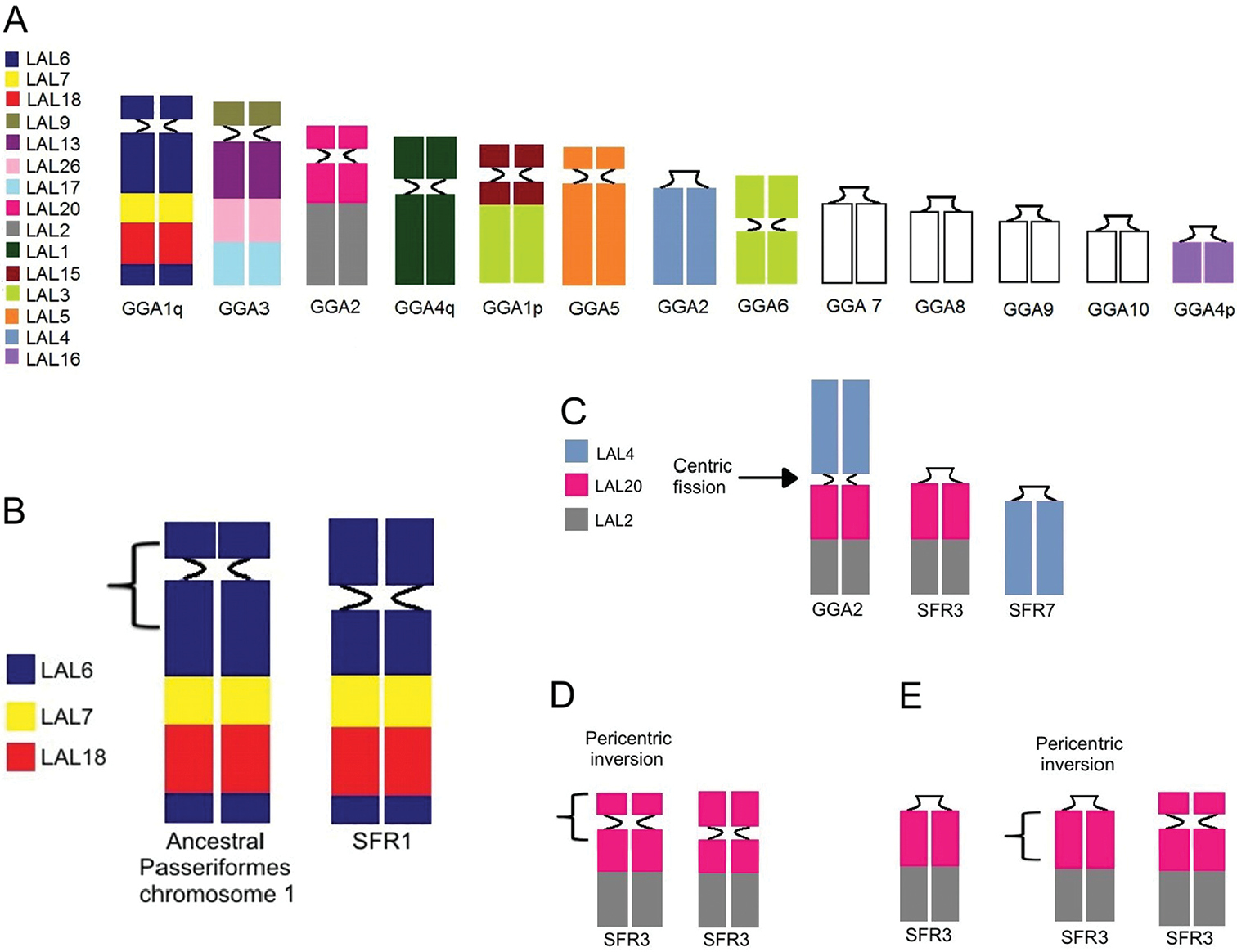
|
||
|
Homology map (13 first autosomal pairs) comparing the syntenic groups of Synallaxis frontalis to Gallus gallus (bottom) and Leucopternis albicollis (colors) (A). Schematic diagram showing the hypothetical pericentric inversion responsible for the heteromorphism observed in pair 1 from two individuals of Synallaxis frontalis (SFR1) (B). Hypothetical rearrangements observed in Synallaxis frontalis (SFR) PAK 2 (GGA2) that would have given rise to SFR3 and SFR7 (C–E). First, a centric fission in the ancestral synteny homologous to GGA2, created two distinct chromosome pairs, homologous to GGA2p (SFR7) and GGA2q (SFR3) (C). A pericentric inversion in SFR3 changed its morphology to acrocentric (D). A second pericentric inversion gave rise to the heteromorphic element in pair 3, which corresponds to a submetacentric chromosome (E). |